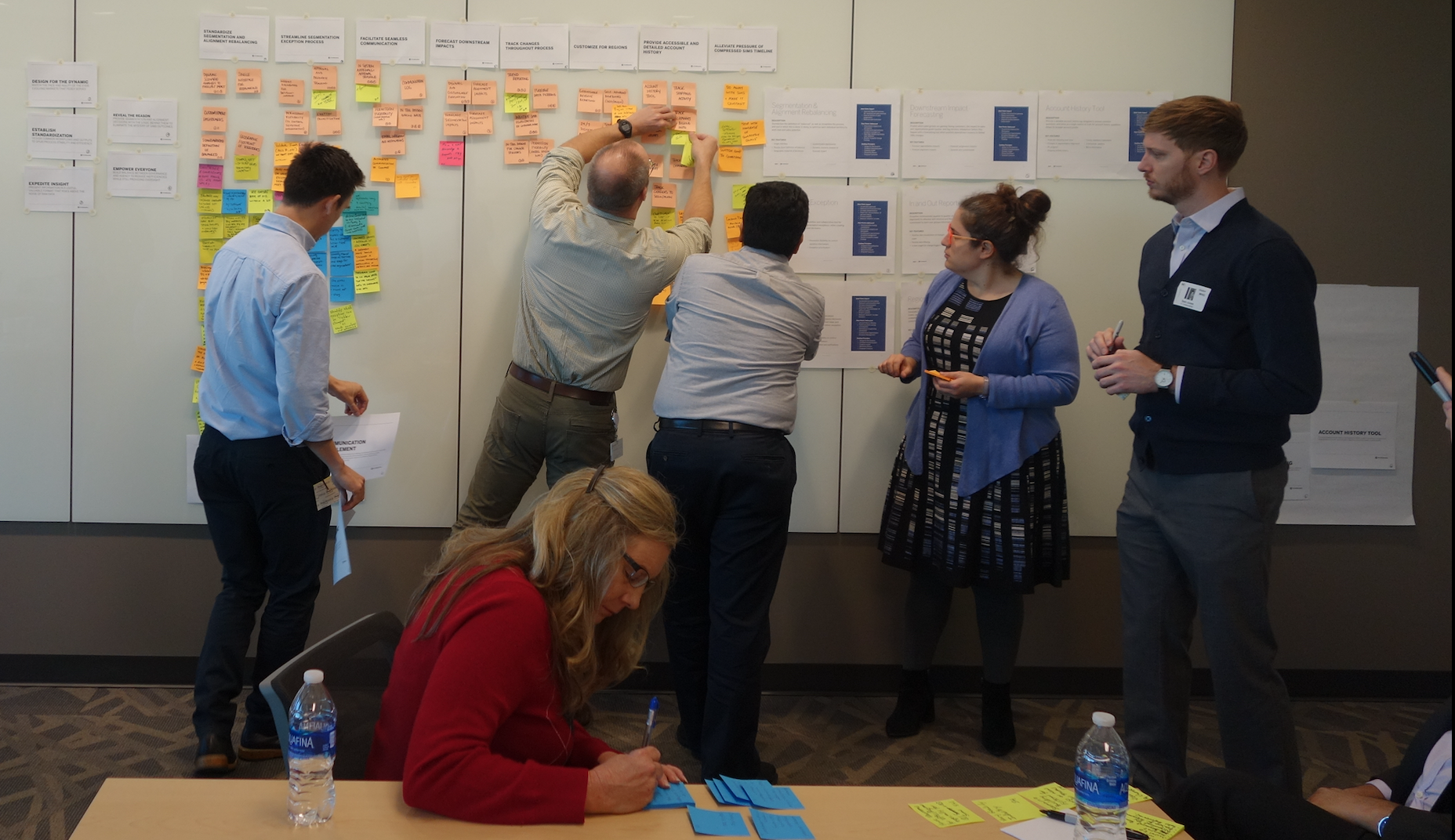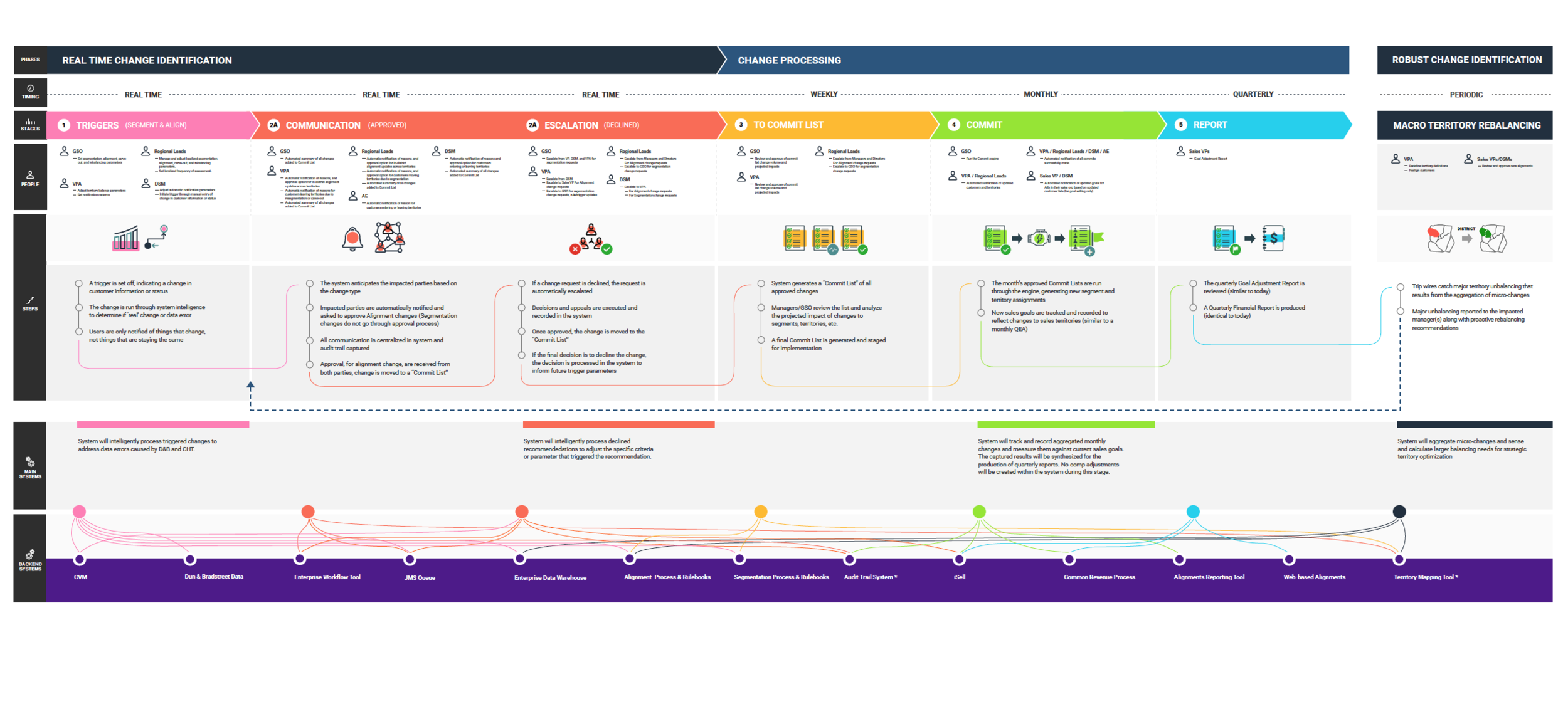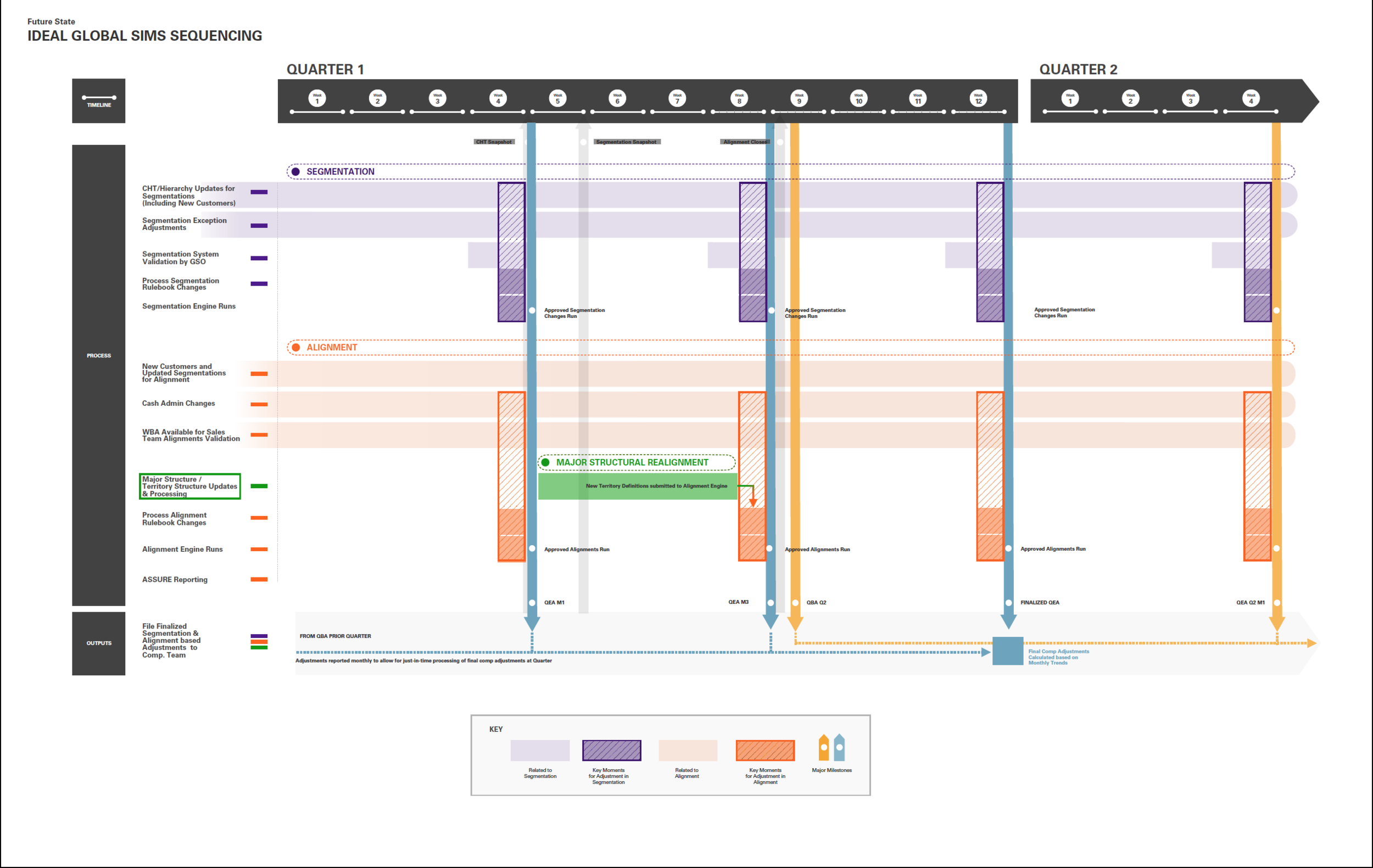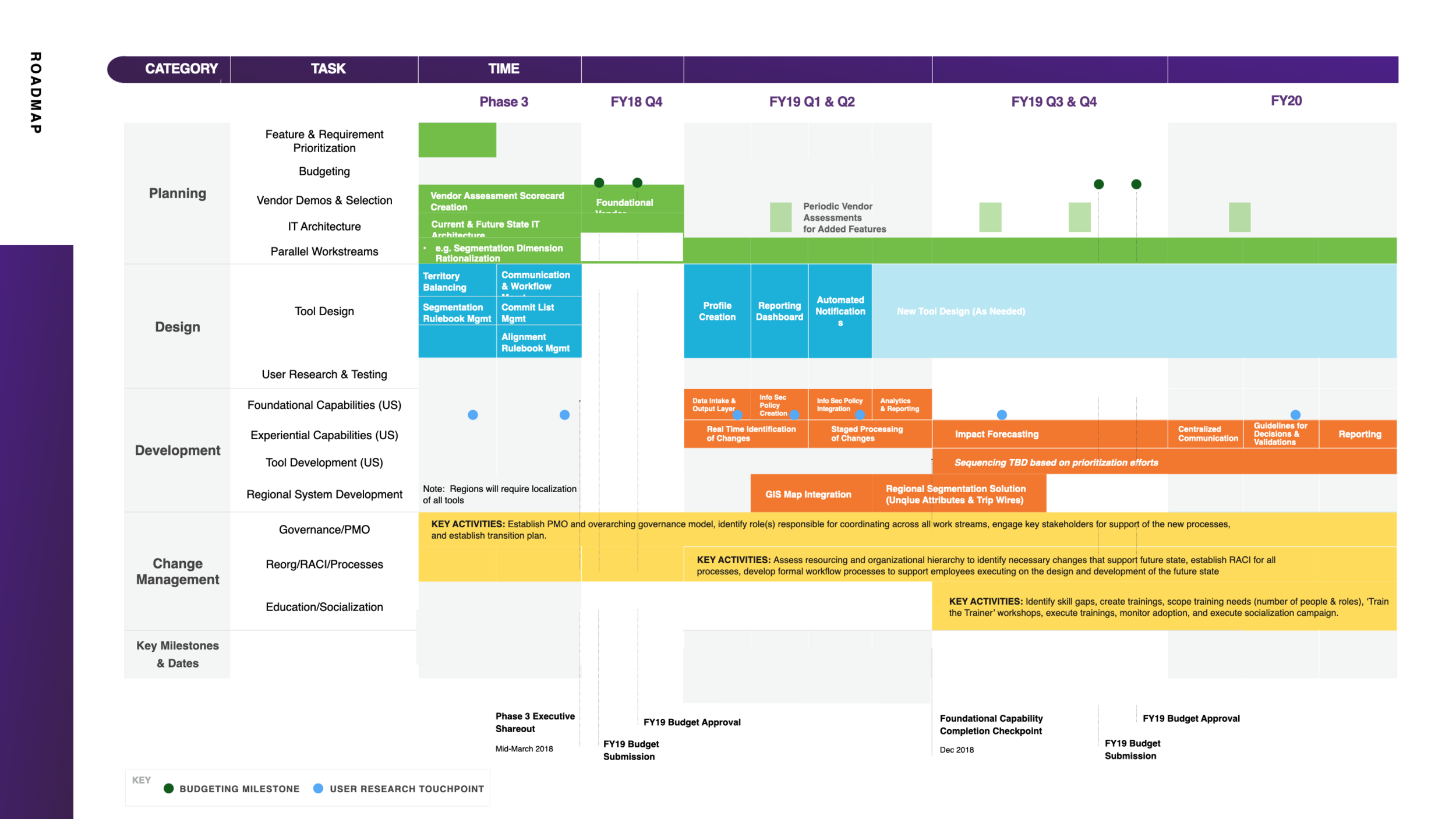Logistics salesforce planning
senior design researcher & strategist, ia collaborative
Chicago, IL
OVERVIEW
The challenge
A Fortune 100 shipping logistics company hired us to reimagine their internal process for matching salespeople to customers. The company serves 55 million business customers of all sizes, from mom-and-pop shops to giant multinational corporations. They have a staff of 6000 salespeople spread across the globe. Additionally, they had recently acquired a European-based shipping company, absorbing its sales staff and customers. Their multi-stakeholder planning process that determines which salesperson serves which customer—which ultimately impacts a salesperson’s compensation—was incredibly complex, time-consuming, and often seen as unfair by the on-the-ground salesforce. Our client asked us to streamline the planning process to reduce the time spent on it by all parties, provide equity and fairness to the salesforce, and restore trust between strategists at HQ and salespeople in the field.
STAKEHOLDERS
Salespeople
Regional Sales Managers (from both parent company & new acquisition)
Global Sales Operations team
Vice Presidents of business units
Analysts who match customers to salespeople
IT team who runs the matching engine
My Role
The team included a business strategist, a UX designer, a visual designer, and myself. I led the research components of the project.
Approach
Discovery research: workflow shadowing, tool audits and walk-throughs, in-depth interviews, process mapping, survey
Co-creation: insights-driven concept development with key stakeholders
Benchmarking: assessment of competitive landscape of salesforce planning offerings
Concept validation: creation and user testing of prototypes of new process workflows and digital tools
outcomes
We delivered recommendations for a streamlined process in the form of a blueprint with step-by-step tasks and backend systems, a suite of digital tools to facilitate the process, and a roadmap for rolling out the new process and tools. When implemented, we hope the new system will save the sales organization up to 350,000 hours of corrupted sales time every quarter—freeing up the sales team to make more sales and the HQ teams to focus on strategy.




understanding the existing process and pain points
methods
Workshop to align on goals and map out the process
Workflow shadowing to understand the steps each role takes as part of the process, including an audit and walk-through of existing tools (and workarounds!) used at each step
In-depth interviews with stakeholders at all levels, from salespeople to Vice Presidents, conducted both in-person and remotely
Survey across the sales organization to validate learnings and quantify the scale of the pain points identified in qualitative research
key insights
Through our research, we discovered that the existing planning system was:
Slow to respond: changes in customer assignments could take up to 6 months to become implemented in the real world
Short on useful tools: users created their own tools to make the process work for them, and many were drowning in gigantic spreadsheets
Lacking intelligence: tons of data was available, but there was little automated analysis
Opaque in its logic: users had to go on a time-consuming hunt to figure out why a decision had been made (and often did not get answers)
Imbalanced: those most impacted by the results perceived themselves to have the least control and agency in the process
As a result, the current sales planning process demanded a disproportionate amount of resources, requiring repetitive manual tasks and demoralizing users—and corrupting 350,000 hours of sales time across the organization. 85% of salespeople saw inaccuracies in their customer assignments, so no one trusted the system. The process appeared purposefully cryptic, pit teams against each other, and even drove high turnover in the sales organization.





insight to action: Co-creation & concept validation
Design principles
Based on the above insights, we devised the following design principles to guide ideation:
Design for the Dynamic: match the pace and agility of the ever-evolving markets that salespeople serve
Establish Standardization: design common workflows and outputs to spur process stability and efficiency
Expedite Insight: present information in a useful, valuable format that rises above the noise of raw data
Reveal the Reason: provide decisions with the logic behind them to eliminate the mystery of system outcomes
Empower Everyone: build balance between governance and agency to reduce inefficiencies while still providing oversight
concept development and prototype testing
Using the design principles as guidelines, we facilitated a co-creation workshop with key stakeholders to generate as many concepts as possible to develop an improved process and set of tools. We then prioritized the most promising concepts and created wireframe prototypes of these tools that simulated potential workflows and screen interactions. We tested the prototypes with participants from each stakeholder type (salespeople, analysts, VPs) to see what elements were working well and what required additional refinement. We carried out this concept validation research both in-person and virtually.








implementing a new salesforce planning system
strategic recommendations
Incorporating feedback from prototype testing, we created a blueprint for a reimagined salesforce planning process. The blueprint defines phases, steps in each phase, the roles involved, and backend systems required. An additional document provides clarity on the quarterly sequence of tasks to be carried out.
We assessed existing salesforce planning software on the market to see if any might meet our client’s specific needs and fit with our process recommendations (after all, there is no reason to reinvent the wheel!). We advised which programs might be the best fit for the necessary capabilities, but with caveats about their shortcomings. We created additional digital tools to fill in the gaps in capabilities that could not be met by existing software.
We delivered these recommendations during a final workshop where we collaborated with the client to build a roadmap for rolling out this new process, building out any missing capacities, and developing the necessary set of tools.











